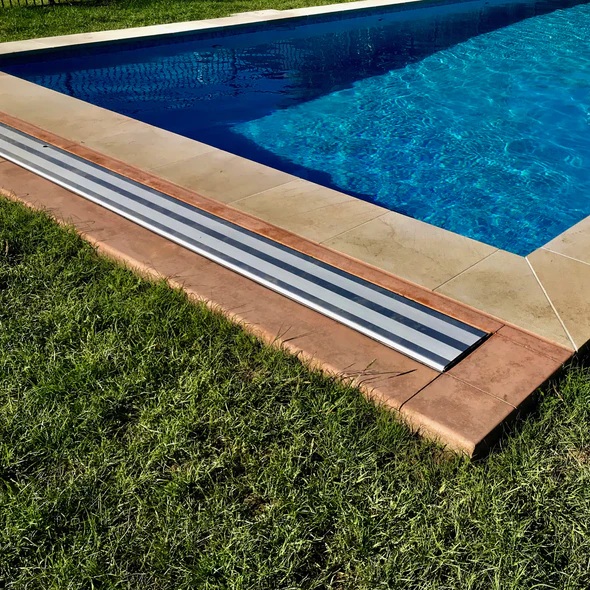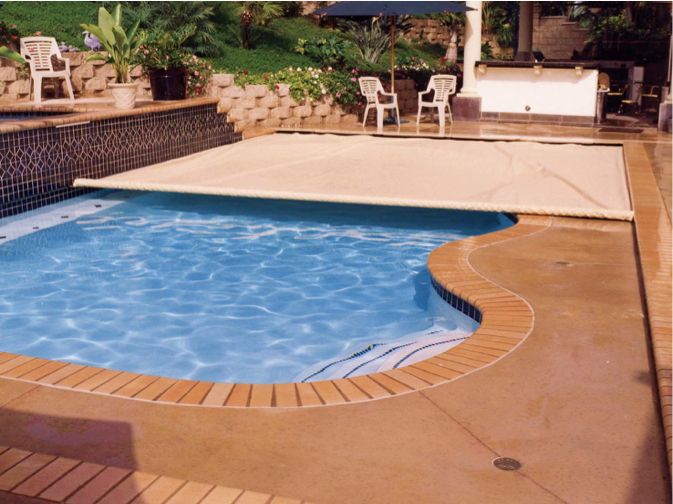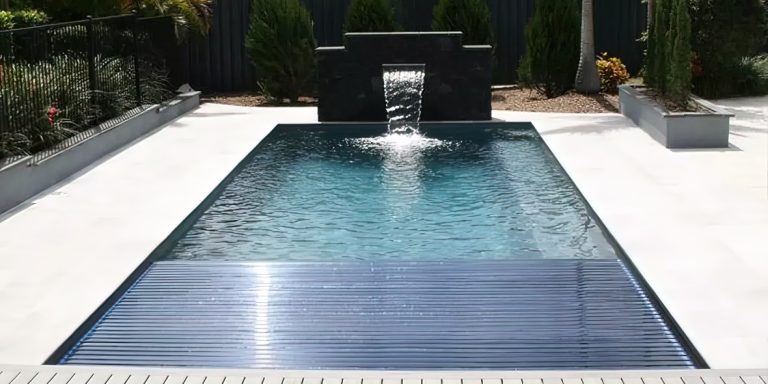Automatic Covers: Precision is Key
The success of automatic pool covers hinges on accurate measurements. Even the smallest misalignment can disrupt the cover from smoothly opening or closing. Therefore, the successful installation of an automatic cover begins before the product even arrives on site, with the meticulous construction of the pool and cover vault.
This is where most errors occur. From our decades of experience this is why getting your pool builder and pool cover specialist together early in the pool installation process is key. Even a slight bow in the construction can cause problems. It might not be immediately noticeable to the naked eye, but once you place a straight piece of aluminium next to it, the distortion becomes clear.
The key is to take the time at every stage to ensure the measurements are absolutely right, especially the width. Here at Pool Covers BC we see everything is based on the width dimension – the cover drum, the lead edge bar, the cover.

Masonry Lids: Striking the Right Balance
One of the most exciting developments in pool cover design has been cover-lid trays that accommodate stone, concrete or other materials to match the deck. This makes the cover vault nearly undetectable, blending seamlessly with the rest of the pool area.
However, this requires careful planning. The masonry should be at the same level as the deck, but the trays and the brackets supporting them must not sit so low that they interfere with the cover’s ability to spool. If the masonry used to cover the lid is too thick, the trays and brackets can be placed too low. The sum of all the lid components should be no thicker than the coping.
Also, keep the masonry pieces small and lightweight enough that someone can reasonably lift them. Avoid awkward shapes such as long rectangles.
Positioning the Mechanism: Getting it Right
The mechanism/pulley assembly should be positioned level with the track. This ensures the system works efficiently and minimises wear and tear.
“If it’s too low, it creates a drag on the cover as it goes up and into the pool,” Cooper warns. This can cause the motor or the cover to wear prematurely. To avoid this, the mechanism should sit as close to track level as possible.
It’s also important to centre the mechanism between the tracks. If it’s not centred, the cover won’t open and close correctly, leading to uneven rolling and potential operational issues.
Cutting the Track or Ropes: Measure Twice, Cut Once
For many systems, installers must cut the ropes and tracks to fit the project. However, cutting them too short can lead to problems.
On the rope side, having too little means the cover can’t open all the way. To avoid this, we suggest cutting when the cover is open. Always err on the side of having too much rope rather than not enough.
Cutting the track too short also has its consequences. On some systems, the tracks must tie the guide and end-of-track mounting plate together. This can’t occur if the track is too short. Always consult your pool cover specialist for specific guidelines.
Installing an automatic pool cover is a precise task that requires careful planning and attention to detail. By avoiding common mistakes, you can ensure a smooth and efficient operation that will keep your pool safe and clean for years to come. Remember, when in doubt, always consult with a professional or the manufacturer’s guidelines.
If you are interested in an automatic pool cover, contact us using the handy form below. You can even send us photos of your pool to help us better evaluate your needs and suggest pool cover options!



